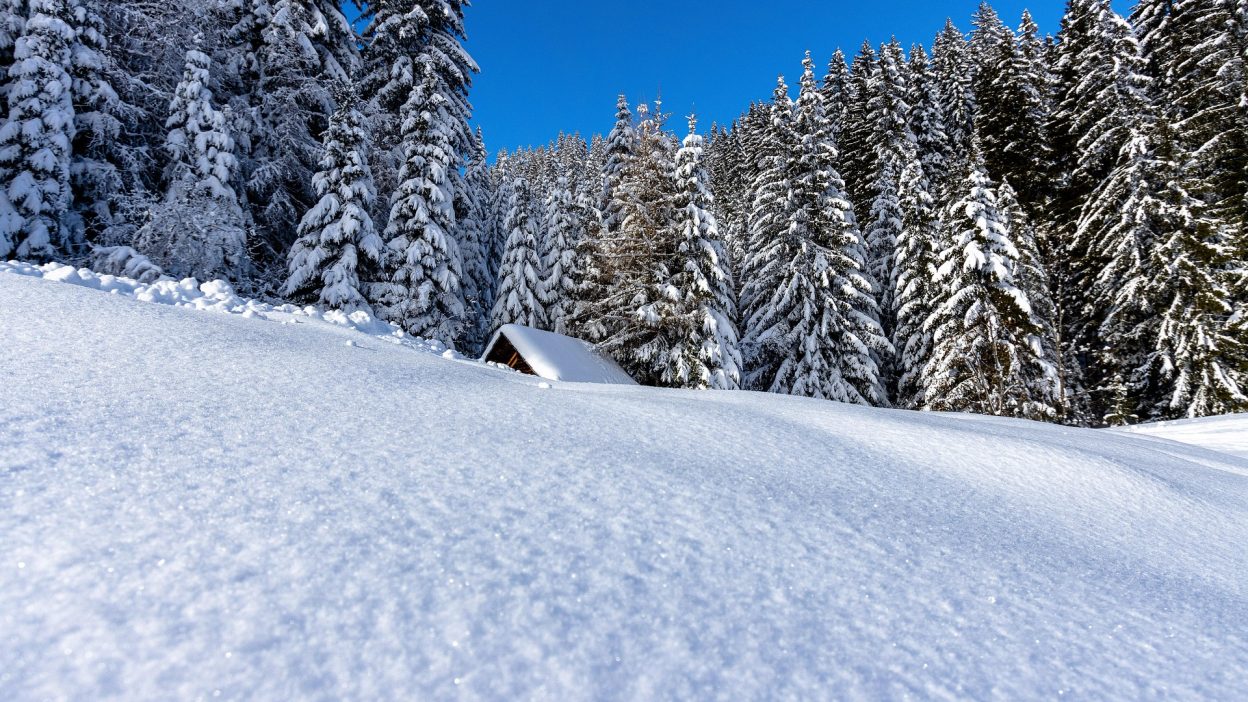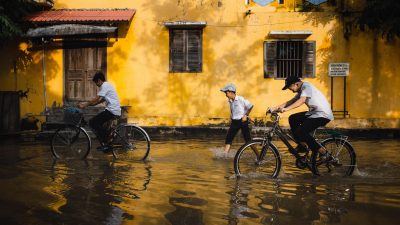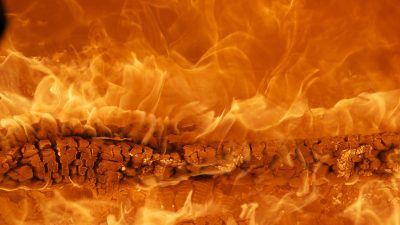The Storm That Wreaked Havoc On The North-East Coast
In December of 1960, a massive Nor’Easter tore through the North-East coast of the United States, causing widespread destruction, fatalities, and a significant amount of property damage. This storm, which intensified more rapidly than predicted, proved to be one of the most destructive winter storms to hit the region in modern history. Its effects were far-reaching, affecting millions of people and leaving a long-lasting impact on the communities that experienced it. This article delves into the details of this devastating event, its causes, its consequences, and the lessons that can be learned from it.
1. December 1960: The Onset of a Historic Nor’Easter
In the winter of 1960, the United States East Coast faced a severe weather event that would go down in history as one of the most powerful Nor’Easters ever recorded. A Nor’Easter, which is a type of storm commonly seen along the North-East U.S. coast, typically features heavy snow, strong winds, and freezing temperatures. However, the 1960 storm had a particularly strong impact due to its rapid intensification and the size of the system.
It all began as a low-pressure system that developed off the coast of the Atlantic. Within a short period, it intensified into a full-blown Nor’Easter, bringing powerful winds, blizzard-like conditions, and record snowfall to cities like New York, Boston, and Philadelphia. The storm took many by surprise, with meteorological forecasts initially downplaying its potential. As the storm quickly grew stronger, residents found themselves facing snow accumulation that reached several feet in some areas, while wind gusts reached up to 80 mph. This unexpected ferocity of the storm left countless communities unprepared, leading to disastrous consequences.
For many, the aftermath of the 1960 Nor’Easter marked a stark reminder of the destructive power of winter storms. The region struggled to recover from its impact, and residents found themselves dealing with damaged infrastructure, lack of power, and in some cases, tragic losses.
2. The Perfect Storm: Why the December 1960 Nor’Easter Was So Destructive
The 1960 Nor’Easter was a storm like no other. While Nor’Easters are common along the North-East coast, this one stood out due to the rapid intensity with which it developed. Meteorologists today understand that such storms form from low-pressure systems that develop off the coast. However, the speed and scale of this storm’s intensification caught everyone off guard.
The system rapidly deepened in pressure, creating a “bombogenesis” effect, which led to a sharp increase in storm intensity. This caused wind speeds to rise, and the snowstorm quickly turned into a blizzard. The combination of heavy snow and intense winds created a near-impossible situation for drivers, pedestrians, and emergency responders alike. At the same time, coastal areas suffered from flooding and storm surges as the low-pressure system drew moisture from the ocean.
One of the most dangerous aspects of this storm was its unpredictability. While forecasts suggested heavy snow, few could have predicted that the system would explode in intensity so rapidly, leaving communities with little time to prepare. By the time the full force of the storm was evident, many were already caught in its grip, unable to escape or seek shelter in time.
3. The Heavy Toll: Deaths, Injuries, and the Financial Cost of the December 1960 Nor’Easter
- Death Toll: The impact of the 1960 Nor’Easter was tragic, as it claimed the lives of at least 17 people. The storm’s rapid intensification and extreme conditions contributed directly to the fatalities, with many of the victims succumbing to the cold, accidents, or drowning. Roads were rendered impassable, and many people died from exposure as they were unable to reach shelter in time. The storm’s fury particularly affected those in coastal towns, where heavy flooding combined with freezing temperatures made rescue efforts difficult.
- Injuries: Hundreds of people were injured during the storm, both from accidents on the road and from falls in the snow. Due to the heavy snow and slippery conditions, car accidents were common. Many drivers became trapped on the roads, requiring rescue teams to work tirelessly to free them from snowdrifts. In addition, the freezing temperatures meant that those who were caught outdoors or in unheated homes faced serious risks of frostbite or hypothermia.
- Property Damage: The storm also caused widespread damage to infrastructure, homes, and businesses. The weight of the snow caused some roofs to collapse, particularly in older buildings that were not designed to handle such heavy loads. In addition, power lines were brought down by both the snow and strong winds, leaving hundreds of thousands of residents without electricity for days. The economic toll was immense, as entire neighbourhoods, especially in urban areas, faced significant damage.
4. Could the December 1960 Nor’Easter Have Been Prevented?
While it’s impossible to stop natural disasters like the Nor’Easter, questions surrounding preparedness, forecasting, and early warning systems have been raised in the aftermath of the storm. At the time, weather forecasting technology wasn’t as advanced as it is today. While meteorologists did predict some snow, they were not able to foresee how rapidly the storm would intensify. Consequently, many communities were unprepared for the severe conditions that soon overwhelmed them.
With hindsight, it’s clear that more could have been done to prepare for the storm. Stronger early warning systems, clearer communication to the public, and better planning could have reduced the storm’s death toll and overall damage. Public service announcements and evacuation orders could have saved lives, and better coordination among local authorities could have ensured that roads were cleared quickly, and power was restored more efficiently. The December 1960 Nor’Easter serves as a cautionary tale for the importance of readiness and communication in disaster management.
5. Real-Life Accounts: Survivors Share Their Stories from the 1960 Nor’Easter
For many who lived through the 1960 Nor’Easter, the memories of that storm are still vivid. Survivors remember the fear of being trapped in their homes or stranded on the road as the snow piled up and visibility dropped to near zero. One woman recalls that she was forced to spend the night in her car after being trapped in a snowdrift for hours, unable to continue driving. She describes the deep feeling of helplessness and frustration that came with being unable to get out of the storm’s path.
Others recount harrowing tales of neighbours helping each other, despite the extreme conditions. Many families were forced to huddle together for warmth in freezing homes, waiting for the storm to pass. However, even as people helped each other, there was a sense of fear that pervaded every moment. Emergency services were delayed, and many people had to wait hours, or even days, to be rescued. The event forever changed the way people viewed severe weather, and it served as a reminder of how quickly nature could turn destructive.
6. The Role of Government and Authorities: Were Officials Ready for the 1960 Nor’Easter?
In the aftermath of the 1960 Nor’Easter, many people began questioning the role of government authorities in managing the disaster. While some areas had been warned about the storm, its rapid intensification left many communities with little time to react. At the time, forecasting systems were not as sophisticated, and local authorities were not equipped with the resources or training necessary to manage such a significant event.
Critics argue that the government’s response to the storm was slow and inefficient. While rescue teams worked tirelessly to assist those affected, their efforts were hampered by poor communication and a lack of coordinated planning. It became apparent that the storm had exposed serious gaps in disaster response infrastructure. Whether it was insufficient road clearing or delayed rescue efforts, the response time and effectiveness were less than ideal. The aftermath highlighted the need for more preparedness and the importance of having systems in place to act quickly in the face of natural disasters.
7. The Impact on Vulnerable Communities: The Poor and Marginalised in the 1960 Nor’Easter
- Vulnerable Populations Left Behind: During the 1960 Nor’Easter, low-income communities, particularly those in urban areas, were disproportionately affected by the storm. Without access to reliable heating or transportation, many of the poorest residents struggled to survive. Additionally, elderly individuals and those with disabilities were often unable to leave their homes to seek refuge, leading to an increased mortality rate among these vulnerable groups.
- Disparities in Emergency Response: One of the greatest tragedies of the 1960 Nor’Easter was the way in which vulnerable populations were neglected. Although emergency services worked hard to assist those in need, the sheer scale of the storm meant that many poor communities received delayed assistance. Without adequate infrastructure or resources, these individuals were left to face the brunt of the storm with little to no support. This exposed a glaring weakness in the disaster management systems of the time, particularly in terms of providing aid to the most at-risk communities.
8. Government Accountability: Was the Response to the 1960 Nor’Easter Adequate?
Following the storm, many questioned the ability of local, state, and federal authorities to effectively manage the crisis. While there were efforts to clear roads and restore power, much of the storm’s damage could have been mitigated with more proactive response measures. The emergency services that were available were stretched thin, and the lack of coordination between various governmental levels meant that aid was often delayed.
In addition, there was criticism regarding the overall preparedness of the region for such a storm. Despite previous warnings, many areas were not ready for the storm’s ferocity. Local officials, particularly in states like New York and Massachusetts, faced backlash for not having better systems in place to prepare for such a severe winter storm. The government’s delayed reaction served as a wake-up call to the need for stronger coordination and more effective planning for future disasters.
**9. Lessons from the
1960 Nor’Easter: A Path Forward for Disaster Management**
The aftermath of the 1960 Nor’Easter revealed serious weaknesses in disaster preparedness, response, and recovery efforts. These lessons paved the way for significant improvements in weather forecasting, emergency management, and public safety.
The introduction of better weather prediction models and the development of stronger storm warning systems were direct results of this disaster. Over time, these improvements helped save countless lives during future storms. Additionally, the storm highlighted the need for better infrastructure and emergency response planning in vulnerable communities.
The 1960 Nor’Easter was a devastating event, but it also led to critical reforms in disaster management. The storm’s legacy lives on today in the improved systems and response protocols that help mitigate the impacts of similar disasters.
10. Conclusion: Remembering the 1960 Nor’Easter and Its Lasting Impact
The December 1960 Nor’Easter remains one of the most destructive winter storms in American history. It took a toll on the lives of many, left behind significant damage, and challenged the ability of the government to respond effectively. However, the lessons learned from this storm paved the way for better preparedness and response to future disasters.
As we reflect on the events of the 1960 Nor’Easter, we must also acknowledge the importance of ongoing improvement in disaster management. While modern technology has made us better equipped to handle similar events, the devastation caused by the storm in 1960 reminds us that no amount of progress can eliminate the power of nature.
FAQs about the December 1960 Nor’Easter
1. How many people died in the December 1960 Nor’Easter?
At least 17 people were killed during the storm, with many succumbing to exposure, car accidents, or drowning due to the severe conditions.
2. What made the December 1960 Nor’Easter so dangerous?
The storm’s rapid intensification and the combination of heavy snow, freezing temperatures, and strong winds created dangerous, blizzard-like conditions that took many by surprise.
3. How did the storm affect transportation?
The storm caused widespread disruption to transportation, with roads impassable due to snowdrifts and freezing conditions. Many people were stranded for hours or days.
4. Was the storm predicted before it hit?
Although the storm was initially forecasted as a snowstorm, meteorologists did not predict its rapid intensification, which made the storm much more severe than expected.5. How did authorities respond to the December 1960 Nor’Easter?
The response was slow, with many areas unprepared for the storm’s intensity. Delayed road clearing and insufficient emergency services highlighted gaps in disaster preparedness.




